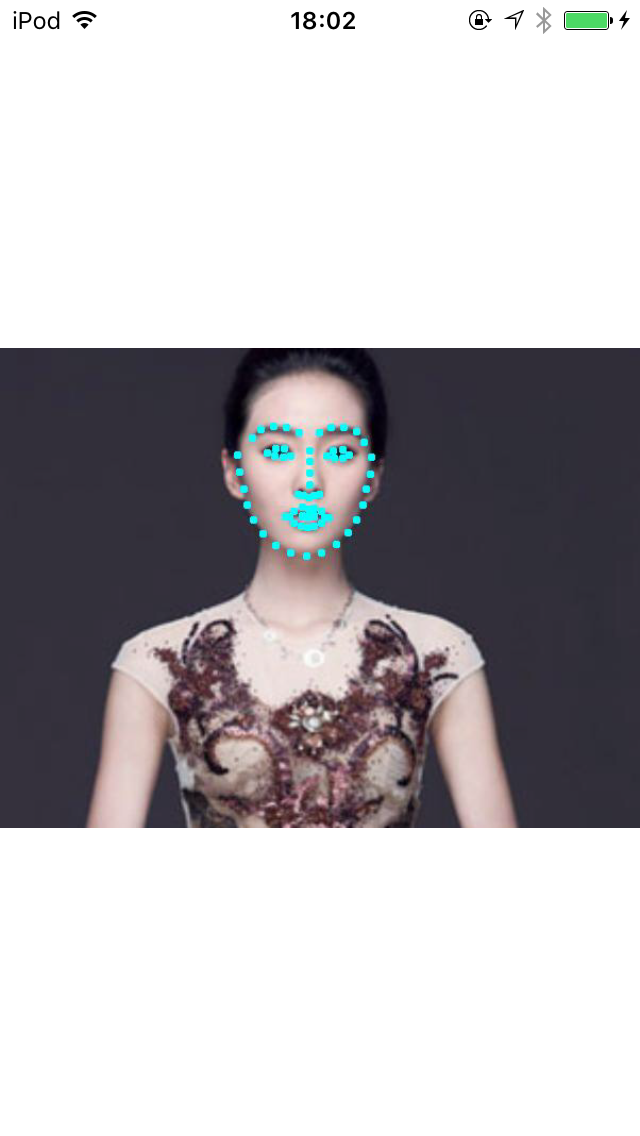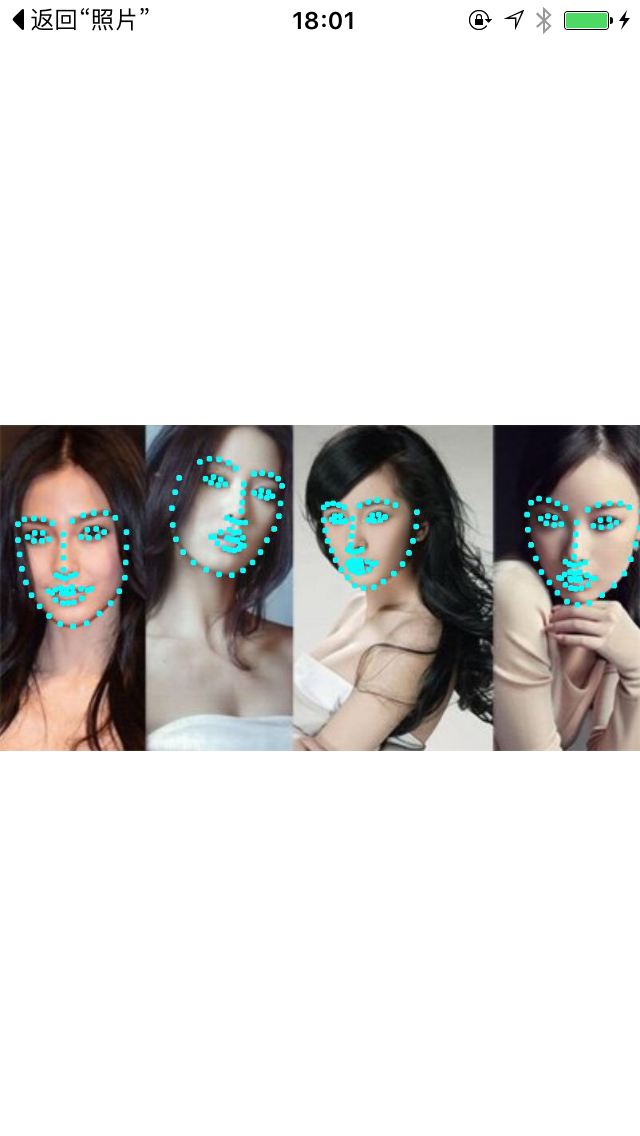官方例子
人脸模型68点绘制,非常非常慢,需要优化。
下载后放入lib 目录下
代码如下
@interface ViewController ()
{
shape_predictor sp;
NSString *imagePath;
}- (void)viewDidLoad {
[super viewDidLoad];
imagePath = [[NSBundle mainBundle] pathForResource:@"hao" ofType:@"jpg"];
self.imageView.image = [UIImage imageWithContentsOfFile:imagePath];
NSString *modelFileName = [[NSBundle mainBundle] pathForResource:@"shape_predictor_68_face_landmarks" ofType:@"dat"];
std::string modelFileNameCString = [modelFileName UTF8String];
deserialize(modelFileNameCString) >> sp;
}- (void)faceDetector{
std::string fileName = [imagePath UTF8String];
//creat image
array2d<rgb_pixel> img;
frontal_face_detector detector = get_frontal_face_detector();
// And we also need a shape_predictor. This is the tool that will predict face
// landmark positions given an image and face bounding box. Here we are just
// loading the model from the shape_predictor_68_face_landmarks.dat file you gave
// as a command line argument.
//load ios image
load_image(img,fileName);
// Make the image bigger by a factor of two. This is useful since
// the face detector looks for faces that are about 80 by 80 pixels
// or larger. Therefore, if you want to find faces that are smaller
// than that then you need to upsample the image as we do here by
// calling pyramid_up(). So this will allow it to detect faces that
// are at least 40 by 40 pixels in size. We could call pyramid_up()
// again to find even smaller faces, but note that every time we
// upsample the image we make the detector run slower since it must
// process a larger image.
pyramid_up(img);
// Now tell the face detector to give us a list of bounding boxes
// around all the faces in the image.
std::vector<rectangle> dets = detector(img);
NSLog(@"人脸个数 %lu",dets.size());//检测到人脸的数量
if (dets.size() == 0) {
return;
}
// // draw Rectangle on face
// for (int i = 0;i < dets.size(); i++) {
// draw_rectangle(img,dets[i],rgb_pixel(0, 255, 255));
// }
std::vector<full_object_detection> shapes;
for (unsigned long j = 0; j < dets.size(); ++j)
{
full_object_detection shape = sp(img, dets[j]);
// and draw them into the image (samplebuffer)
for (unsigned long k = 0; k < shape.num_parts(); k++) {
dlib::point p = shape.part(k);
// p 点的直径 3 参数为原点直径 rgb_pixel 颜色
draw_solid_circle(img, p, 3, dlib::rgb_pixel(0, 255, 255));
}
std::cout << "number of parts: "<< shape.num_parts() << std::endl;
std::cout << "pixel position of first part: " << shape.part(0) << std::endl;
std::cout << "pixel position of second part: " << shape.part(1) << std::endl;
// You get the idea, you can get all the face part locations if
// you want them. Here we just store them in shapes so we can
// put them on the screen.
shapes.push_back(shape);
}
NSArray *docPath = NSSearchPathForDirectoriesInDomains(NSDocumentDirectory,NSUserDomainMask, YES);
NSString *documentsPath = [docPath objectAtIndex:0];
documentsPath = [documentsPath stringByAppendingPathComponent:@"test.png"];
const char *savePath = [documentsPath UTF8String];
save_jpeg(img, savePath);
self.imageView.image = [UIImage imageWithContentsOfFile:documentsPath];
cout << "Hit enter to process the next image..." << endl;
cin.get();
}
























 862
862

 被折叠的 条评论
为什么被折叠?
被折叠的 条评论
为什么被折叠?








